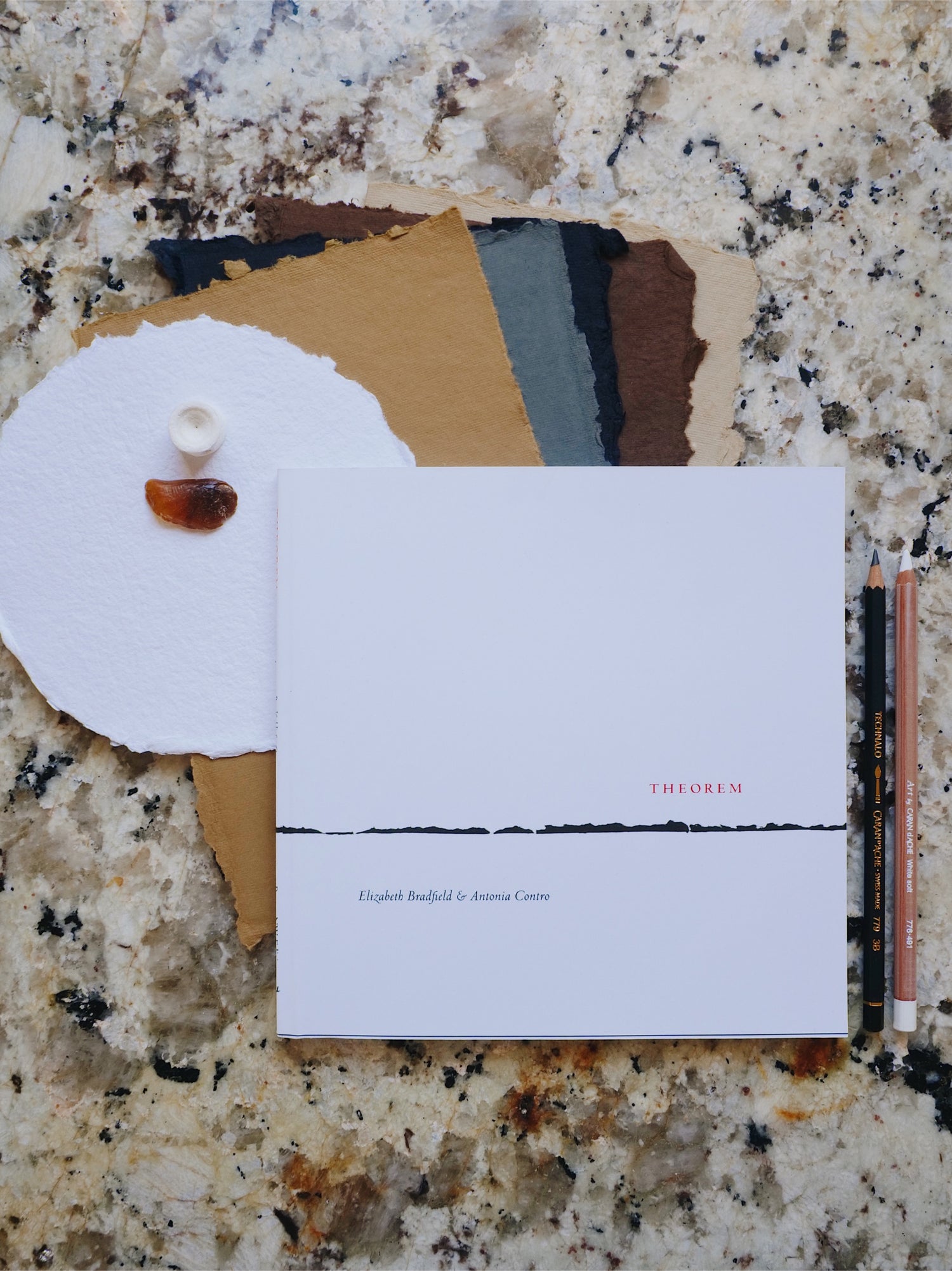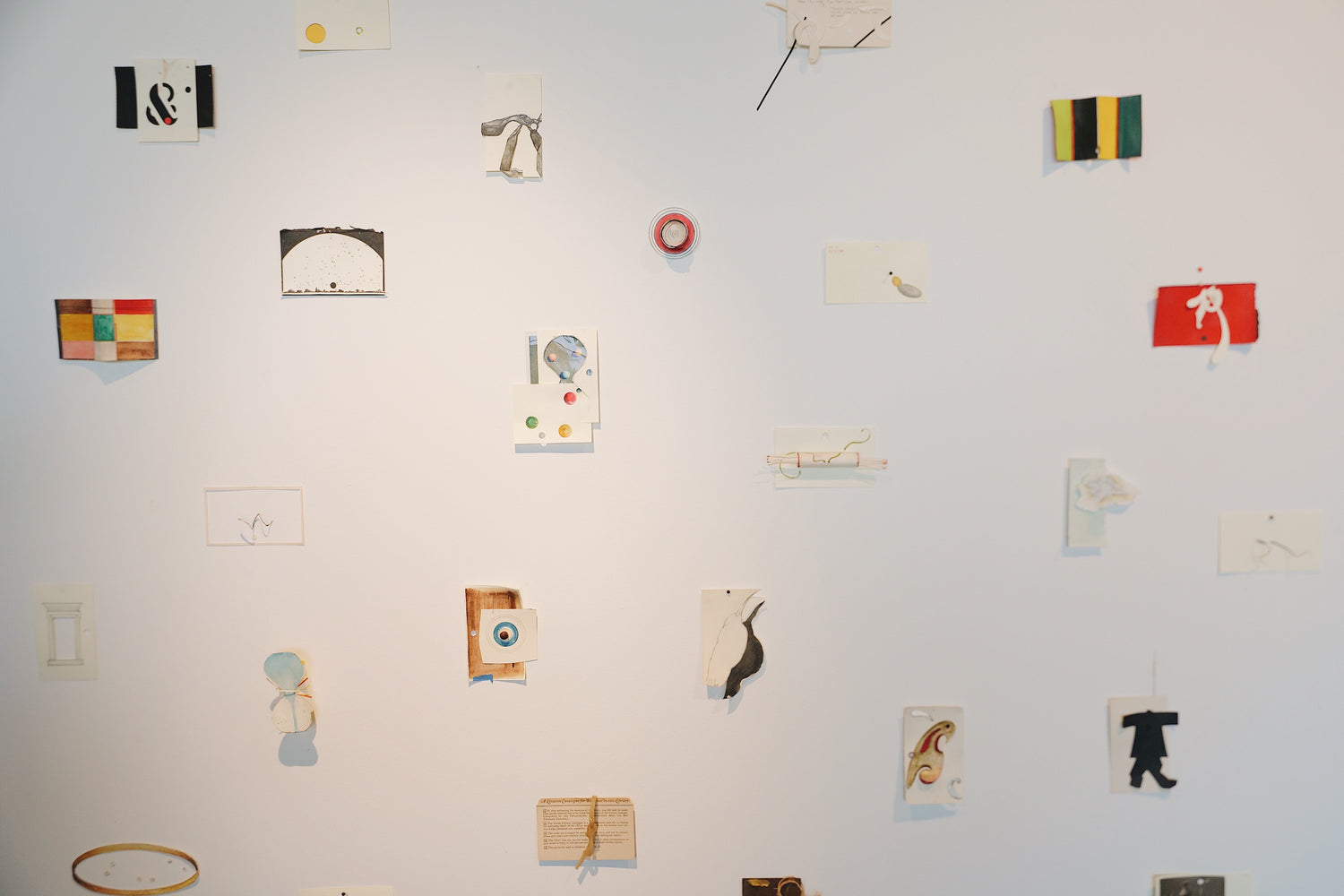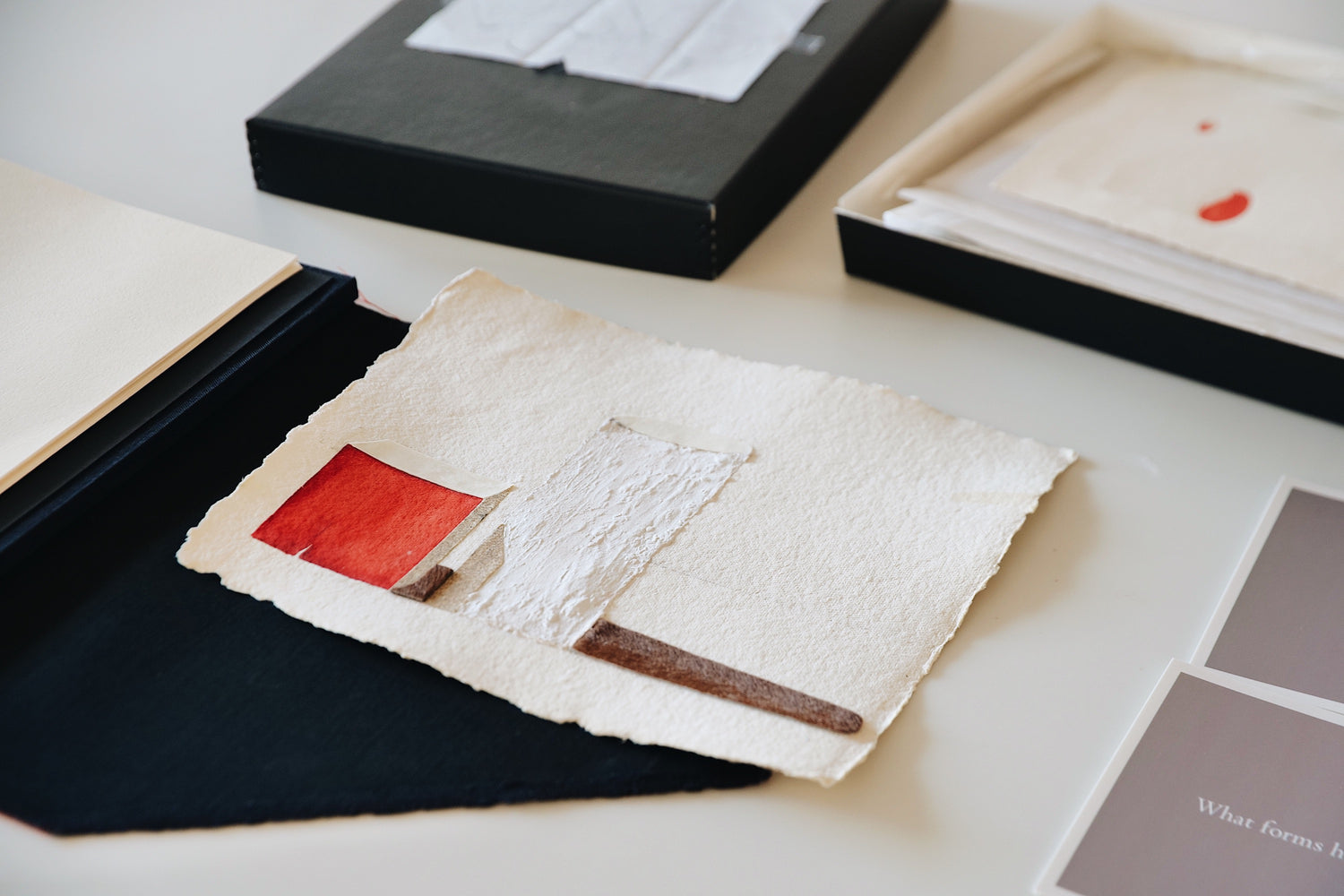Welcome to the studio of Antonia Contro
Antonia is a visual artist whose practice ranges from intimate drawings to site-specific installations and multidisciplinary collaborations. Her work explores the nature of time and the meaning of knowledge: how and when we come to know what we know.
A dear friend of Martha Mae, Antonia is a creative and collaborative force. Her endless curiosity and passion for learning, drive her connections and expand her work across mediums.
As you make your way through this interview and studio visit, let your eyes linger on each piece. There are many layers and themes waiting to unfold. As Antonia says, "If you look carefully and attentively around you, not just straight on, you will find things of wonder to source. I always pay attention to what is in my periphery."

Hi Antonia! Tell us a little bit about yourself.
Greetings, I am Antonia Contro—I’m an artist, an educator, and a collaborator. For 25 years, I was the director of Marwen, a nonprofit art, college planning and career development organization that educates and inspires Chicago's young people.
What excited you and sparked your curiosity as a child?
I played guitar in mass in Catholic grade school, I was president of my junior high art club (already taking leadership seriously!) and I had a menagerie of pets including my goat, Penelope.
I was in my happiest “flow state” when I was working at the kitchen table, elbow-deep in salt and water dough, making and baking sculptures, as well as drawings and paintings.
I’d saddle up my pony, Baby Doll, and head out to explore the trails and the woods right outside our back door, gather treasures in my saddlebags along the way to use in still life arrangements and for assemblage and collage materials. This was my early field research and observation from nature.
Was there a medium or practice that laid the foundation for your creative life?
I come from a long line of artists. Beginning with my grandfather, Antonio Pasin, an Italian immigrant who had an intuitive design sense, and invented the Radio Flyer wagon. My mother and my aunt were artists, too, and showed me different ways to be creative, even with limited resources and support. I was an art major at a university not known for its arts program but I was lucky enough to be there when Chicago painter and Imagist, Ed Paschke, taught there. He was profoundly influential, especially in how he balanced experimentation with rigorous skill-based instruction. I had been enchanted with surrealism since I was a kid; he encouraged me to embrace it and shape and personalize my own style of it.
My media has evolved and expanded over the years, and I credit the influence of many teachers, not just artists but writers, musicians, scientists, and dancers who shared their knowledge and practices genuinely and generously, and who often became collaborative partners on many of my installations and projects.
Books—both their form and content—are a centerpiece of my art. Even before I could read words, when I could only read pictures, I was mesmerized by books. Books remain a source of inspiration, and I could speak endlessly about their influence. Even now, I’d say that most of my major works, regardless of the final medium or type, begin on a blank page in a book.
Do you keep a sketchbook?
Sketchbooks are the foundation of my thinking, making, and practice. They are everywhere: in my studio, home, backpack, etc. Often, what began as a journal or sketchbook becomes a finished work of art, and is integrated into a larger installation. Books can be sources and prompts for collaboration with other artists, thinkers, and makers from a variety of disciplines.
Theorem is one of the best examples: it began as an artist book of drawings, collages, and watercolors that I shared with Elizabeth Bradfield, a poet with a kindred aesthetic. Elizabeth wrote a poem in response, which we developed into a limited fine art book published by Candor Arts and later released as a trade book by Poetry Northwest Editions. Theorem has been one of the most enriching journeys of my art career—and is still evolving!

Why did you start collecting objects? When did they become a part of your art practice?
I figure collecting is simply in my nature as an active and visual way to order and make sense of my universe. Since I was a young artist, I conceived my most inspired, original artworks when I gave myself freedom to experiment, take risks, resist perfectionism, and play with forms or mix materials without concern about the finished product.
When I was in college, I used to scoff that sculpture was what I walked around to look at a painting. Now, so many of my two-dimensional works—drawings and paintings—are made complete by envisioning, building, and tending to the three-dimensional environments around them.
If you look carefully and attentively around you, not just straight on, you will find things of wonder to source. I always pay attention to what is in my periphery.
You’re such a collaborative artist. What draws you to working with other artists across mediums?
It has been the most enriching way to expand my work and knowledge, and to experience and make work that moves beyond the original scope of my craft and imagination. In fact, one of my next ambitions is to design a stage set for theater, dance, or music performance.
When you built your studio, what drew you to the space and what did you do to make your own? How do you feel when you walk into your space?
I first saw my building as it was being gutted for rehab. It was the first time in my career that I had the opportunity to shape and define my own studio. I was able to secure a raw space, which allowed me to design it to serve me best. I created an open space with natural and artificial light, discrete storage, and ample wall space. The centerpiece of my studio is a large, custom-made work table. It is a light filled space with nearly 18’ ceilings and a west-facing wall of windows. When I walk in, morning or night, I enter a completely different world, and I begin my work.
Could you tell us more about Theorem? Now that it has been out in the world for a couple of years, does it have the same meaning to you as when you first released it, or do you experience it differently?
I knew from Theorem’s start that it would open up bold opportunities and relationships, and move in unprecedented directions that were both rewarding and challenging. From shaping the concept and content with Elizabeth, to working with book artisans and publishers, and more recently to envisioning it in other forms—performance, for example—Theorem has been rich and provocative, and continues to unfold.
The Theorem Collective, which includes myself, Elizabeth Bradfield, composer Eliza Brown, violinist Clara Lyon, animator Joseph E. Merideth, designer/art director Andrew Boyce, and sound designer Dan DeHaan, workshopped a live performance of Theorem on the grounds of Ragdale Foundation in fall of 2022. We are currently honing final details of the multimedia adaptation of the book that we hope to produce and present soon.
Can you share with us any projects you’re working on or upcoming releases?
1.Thus, the Night
Thus, the Night is an art film in collaboration with Spektral Quartet. It was privately premiered at the Logan Center for the Arts at the University of Chicago last November. On March 14, Thus, the Night was publicly premiered in Aspen, CO in partnership with Aspen Film. The digital premiere, hosted by Strad Magazine, will be on April 11. You can see a trailer for it here.
Thus, the Night is a 19-minute art film featuring Spektral Quartet’s mesmerizing performance of Henri Dutilleux’s seminal 1976 string quartet, Ainsi la Nuit, and my artwork. The film was gorgeously rendered by production company Four/Ten Media.
Together, we strove to echo the composer’s interests in surrealism, emphasizing the heightened qualities of memory in the liminal space between light and dark; of time itself.
Filming took place on the prairie’s edge at Ragdale Foundation in Lake Forest, the 55th floor of a Chicago skyscraper, and at a private residence on Lake Michigan in June 2022.
I can’t wait for you to experience the film in its entirety next month!
2. Sentinels, a mixed media installation work of mine will be featured in the Museum of Contemporary Photography’s upcoming exhibition, Captured Earth, May 24-August 18, curated by Kristin Taylor. This work was one of the first pieces I made that included recorded and mixed sound, light, and photography set in a tableau. It remains one of my favorites.
3. sussurra—from the Italian verb to murmur or whisper—is a film collaboration I’ve been working on over the past 6 months with composer Eliza Brown produced by Jon Satrom of studiothread, featuring foglia, my small sculpture of a leaf. Over the approximately five-minute span of the film, the leaf is "activated" by breath and augmented by animated wooden art forms. Brown’s score contains long, slow musical phrases with a subtly flickering surface, reflecting the leaf’s delicate motion as well as the more stationary, grounded elements of the sculpture.
The music for sussurra, scored for clarinet, percussion, violin, and cello, was commissioned by Classical Music Indy for the Micro Composition Project in 2023
4. L’Osservatore: Handmade Sketchbook
Soon to be released and carried by Martha Mae, I have been working on a set of handmade and uniquely designed art journals. Conceived in partnership with Matt Austin (who published the fine art edition of Theorem), the journals will be produced at his Los Angeles press. More on this soon!

Inspired by and in celebration of creation, response, and collaboration which infuses the making of Theorem, we have gathered a "creative kit" with materials for you to explore your own making.
Kit Includes:
- Theorem
- 2 pieces of lovingly collected natural ephemera (blue shark vertebrae, opercula from moon snails, porcupine quills, "jingle shells" also known as mermaid's toenails)
- 5 sheets of 9"x6" handmade papers
- 1 sheet of 6" round cold press watercolor paper
- 1 Caran d'Ache white soft pastel pencil
- 1 Caran d'Ache technalo water soluble graphite pencil 3B
Theorem, a collaboration by poet Elizabeth Bradfield and artist Antonia Contro. In the book, spare images, distilled text, and the resonant space between investigate the legacy of secrets acquired in childhood and held through a life. Part visual interrogation of shapes and forms, part lyrical bewilderment at the interface of memory and geometry,Theorem charts a luminous path of self-discovery that unsettles and upends.











